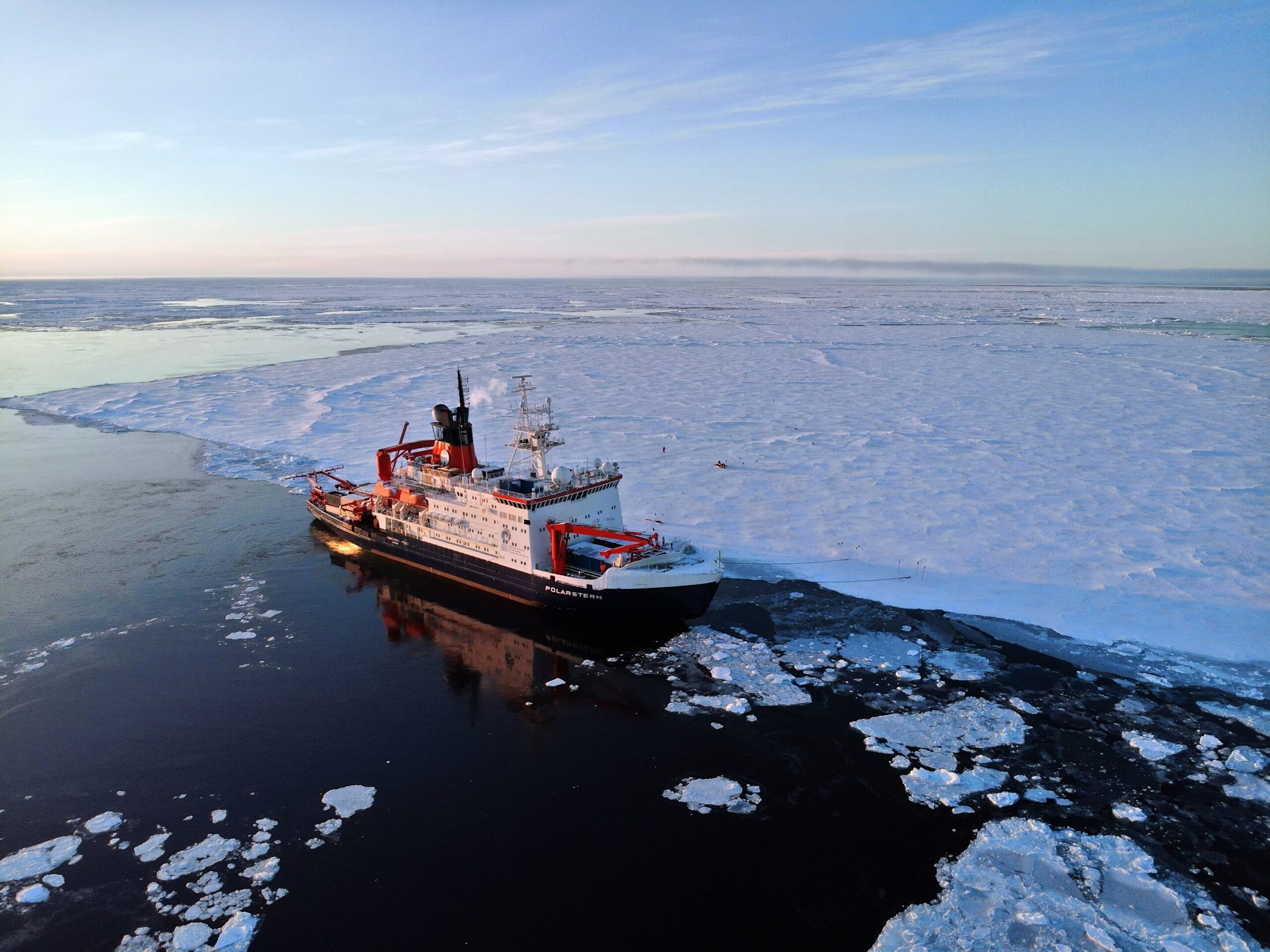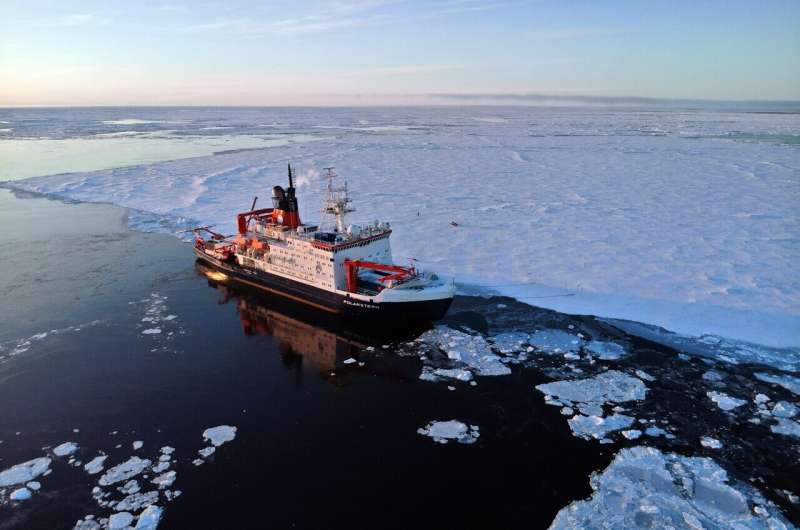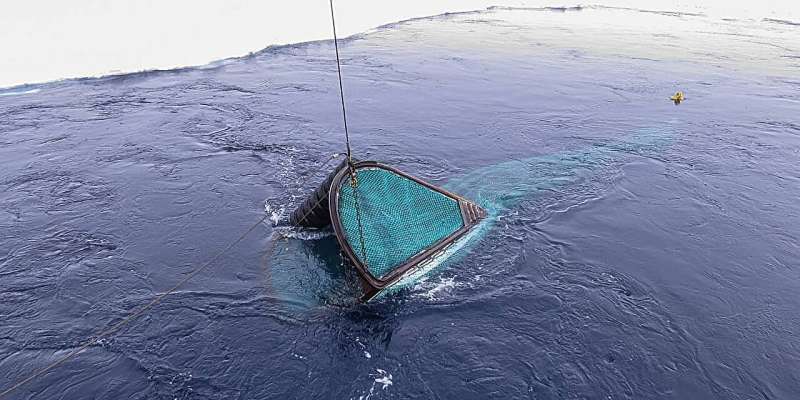

Sparse sea ice, thousands of data points and samples, a surprising number of animals and hydrothermal vents—those are the impressions and outcomes that an international research team is now bringing back from a Polarstern expedition to the Central Arctic. After a four-month-long Arctic season, the Alfred Wegener Institute’s research icebreaker is expected to arrive back in Bremerhaven with the morning high tide on Sunday.
When the research icebreaker Polarstern returns to Bremerhaven, tentatively on Sunday, 13 October 2024, the ArcWatch-2 expedition will bring home an up-to-date scientific overview of the Eurasian and Central Arctic. Researchers from 17 countries and 24 institutes have created an extensive dataset encompassing the atmosphere, ocean circulation, sea ice physics, geochemistry and the ecosystem. After the ship’s return, the data will be used to gain better insight into the changes in the Arctic as part of the global ocean and climate system.
According to Prof Benjamin Rabe, chief scientist on the ArcWatch-2 expedition and a physical oceanographer at the Alfred Wegener Institute, Helmholtz Centre for Polar and Marine Research (AWI), “Compared to the long-term mean, we observed unusually sparse ice cover in the Central Arctic, though the conditions were similar to what we saw during last year’s ArcWatch-1 expedition. Now our analyses will focus in part on how this is connected to the other aspects we investigated: the atmosphere and ocean circulation.”
The latter is also changing, as Dr. Céline Heuzé, a physical oceanographer at the University of Gothenburg, reports, “A first look at the preliminary temperature and salinity data indicates changes in the circulation of Atlantic water, though this still needs to be confirmed with an analysis of the fully calibrated data.”
The oceanographic analyses will be combined with another focus point on the expedition: marine chemistry. The corresponding working groups gathered data on e.g. trace metals, which are also vital for marine organisms. The team also investigated anthropogenic material input, carbon in the form of various compounds, nutrients, and pollutants like mercury. This will make it possible to assess chemical changes in the depths of the Arctic Ocean that satellites can’t detect.
For this purpose, more than 20,000 liters of water samples were collected—for the first time, also using a new, especially clean sampling system developed by the AWI. Landside, these samples will undergo thorough analyses and subsequently contribute to the international research program GEOTRACES.
“We’ll then be able to see, for example, how historical environmental inputs continue to spread—but also where recent environmental legislation has already led to greatly reduced pollution,” explains Dr. Walter Geibert, a geochemist at the AWI and co-leader of the expedition.
Another highlight of the expedition from a marine chemistry standpoint was the plume produced by a hydrothermal vent in a deep region of the Gakkel Ridge, where the AWI had never discovered any before. These vents offer key avenues for materials to enter the ocean, though up to this point only a small few have been observed in the Arctic.
The ship’s invaluable scientific cargo also includes hundreds of tissue samples, taken from more than 80 fish individuals. By combining a range of draglines, nets and acoustic methods, the biologists were able to document countless fish, squids and prawns in the Central Arctic.
“Luminescent sardines from the genus Benthosema were omnipresent in the Central Arctic Ocean,” reports AWI biologist Dr. Hauke Flores, who led the Biology Team on board. His initial assessment of the results, “These fish, less than 10 centimeters long, and the prawns and squids we found, indicate that the ecosystem surrounding the North Pole is more biodiverse than previously assumed.”

Together with samples gathered on the distribution and biodiversity of microbial and planktonic biotic communities in the water and sea ice, in connection with the EU project SciCAO this data represents an important basis for the Central Arctic Ocean Fisheries Agreement (CAOFA); the Agreement calls for collecting sound scientific findings before the ecologically sustainable development of fishing can be considered.
In addition, during the latest Polarstern expedition, the AWI Sea Ice Team took ice thickness readings using the ship’s onboard helicopters. “Finding patches of suitable weather for the 11 survey flights wasn’t easy—all told, we only had four days and six hours of cloudless conditions as the ship traversed the sea ice,” says AWI sea ice physicist Dr. Niklas Neckel.
Fog and clouds are typical for the summertime Arctic and were an important part of the research conducted by the expedition’s Ice/Atmosphere Team. During a livestream from on board, these conditions could also be seen: on 19 September, viewers had the chance to chat with our researchers on the AWI YouTube channel and see the Polarstern at the North Pole from a drone’s-eye view. As part of a pilot project, the scientific drones were primarily used to support navigation and investigate the ice’s surface.
Since early June, the Polarstern has been on a total of three expeditions to the Arctic. In July and August, she called to port in Tromsø, Norway and in Longyearbyen, Spitsbergen to exchange staff, transfer scientific equipment, and bunker provisions and fuel. The ship is expected to arrive with the morning high tide (ca. 9:00 am) on 13 October and will then remain at Bremerhaven’s Lloyd Werft shipyards until the end of November for routine maintenance and repairs before departing for the 2024/25 Antarctic season.
Provided by
Alfred Wegener Institute
Citation:
Research vessel provides comprehensive assessment of the changing Central Arctic Ocean (2024, October 11)
retrieved 11 October 2024
from https://phys.org/news/2024-10-vessel-comprehensive-central-arctic-ocean.html
This document is subject to copyright. Apart from any fair dealing for the purpose of private study or research, no
part may be reproduced without the written permission. The content is provided for information purposes only.